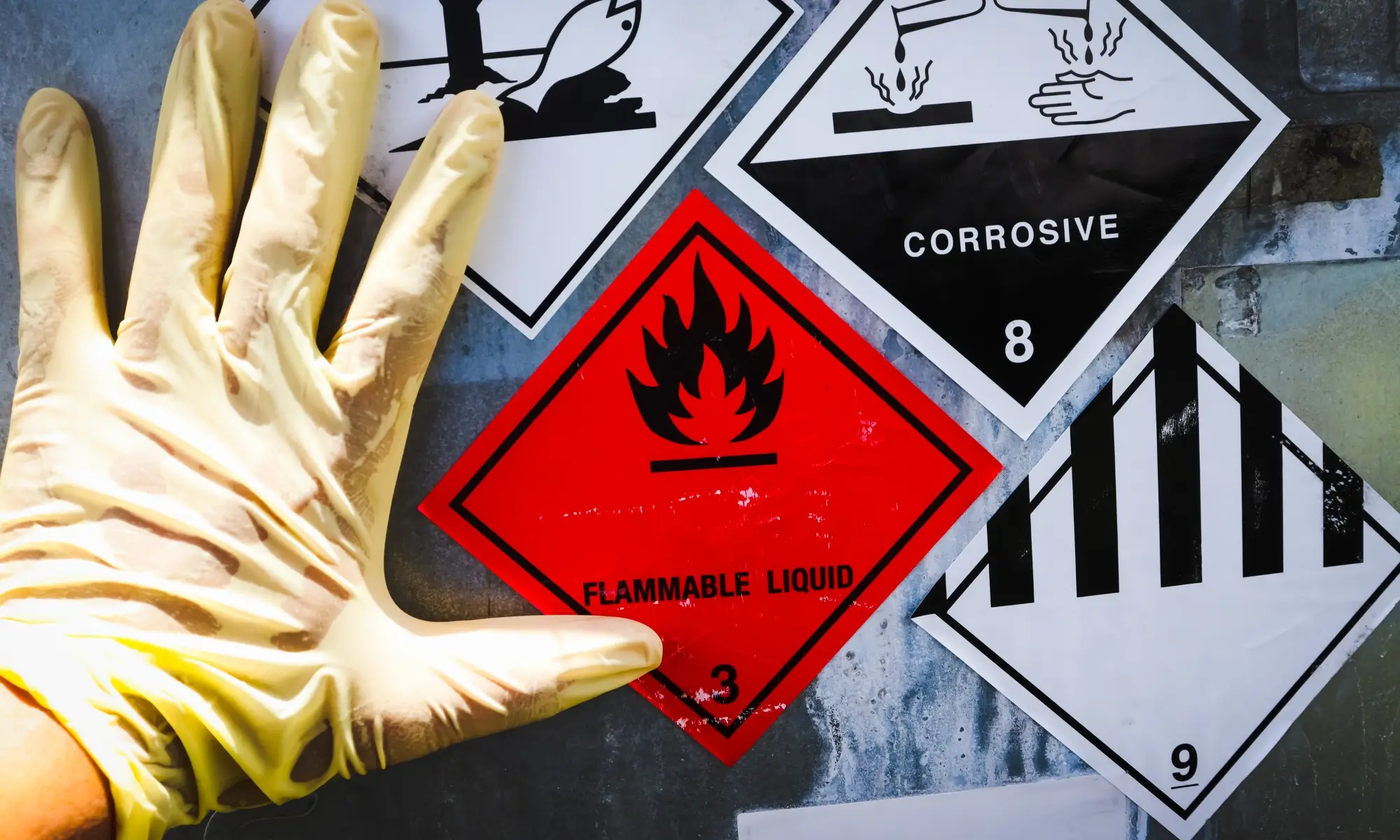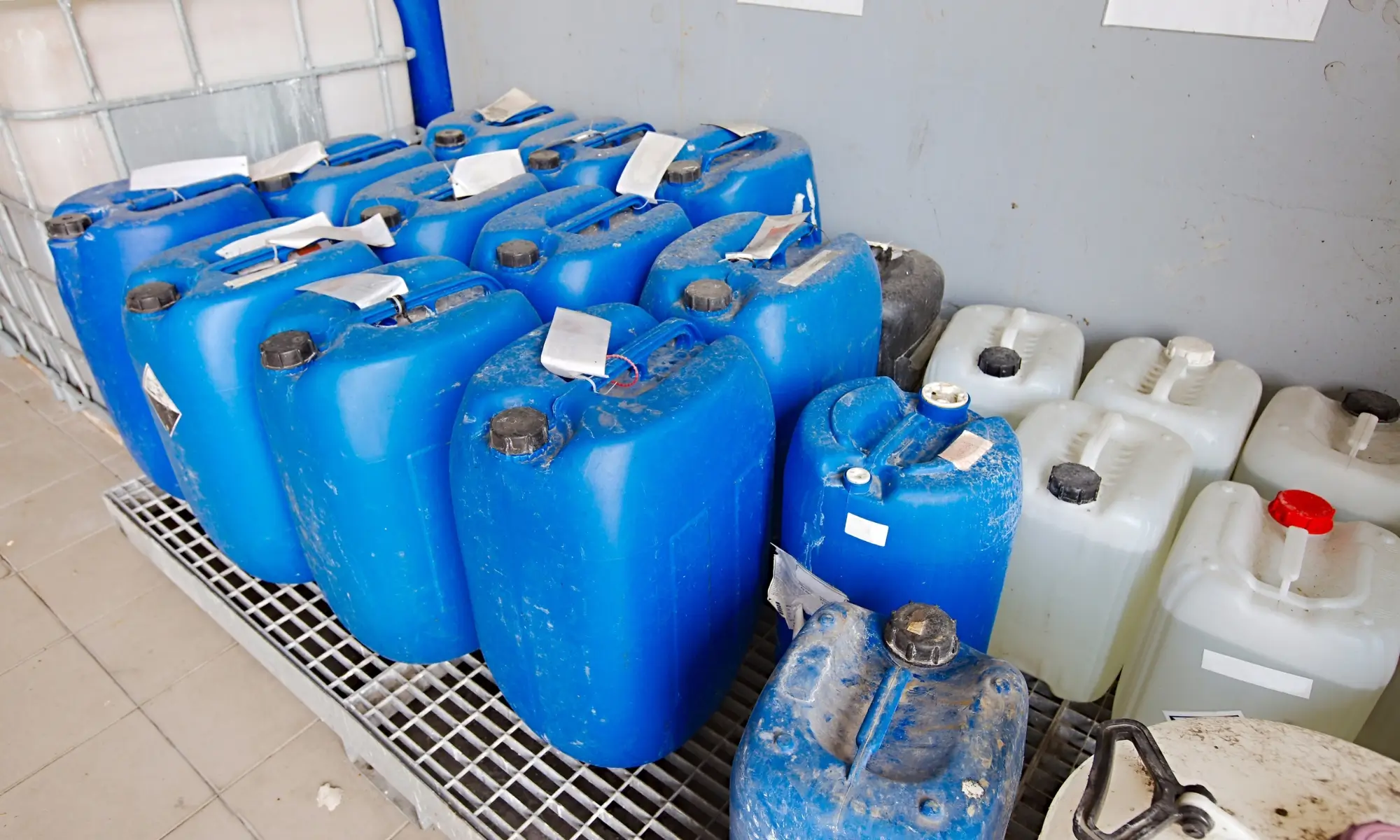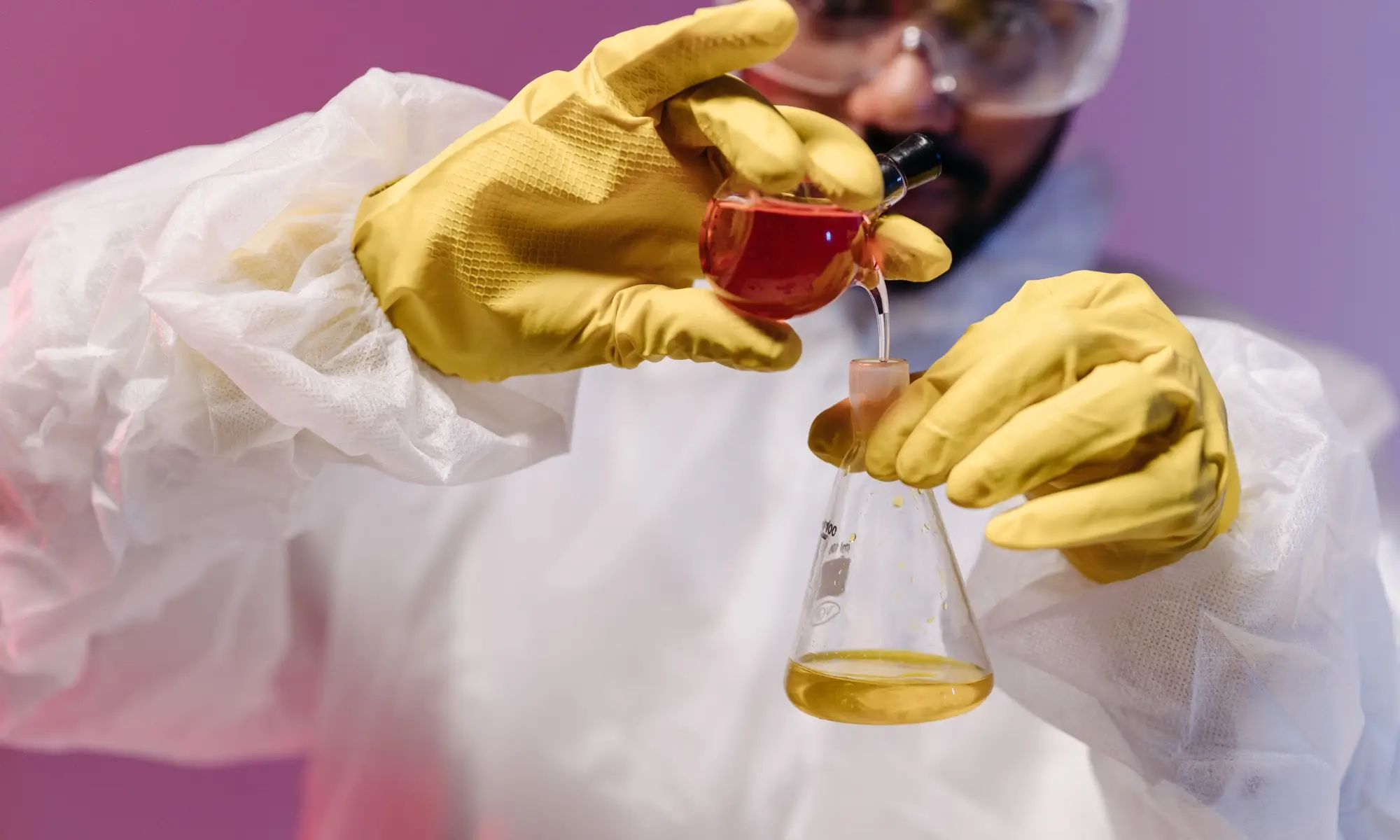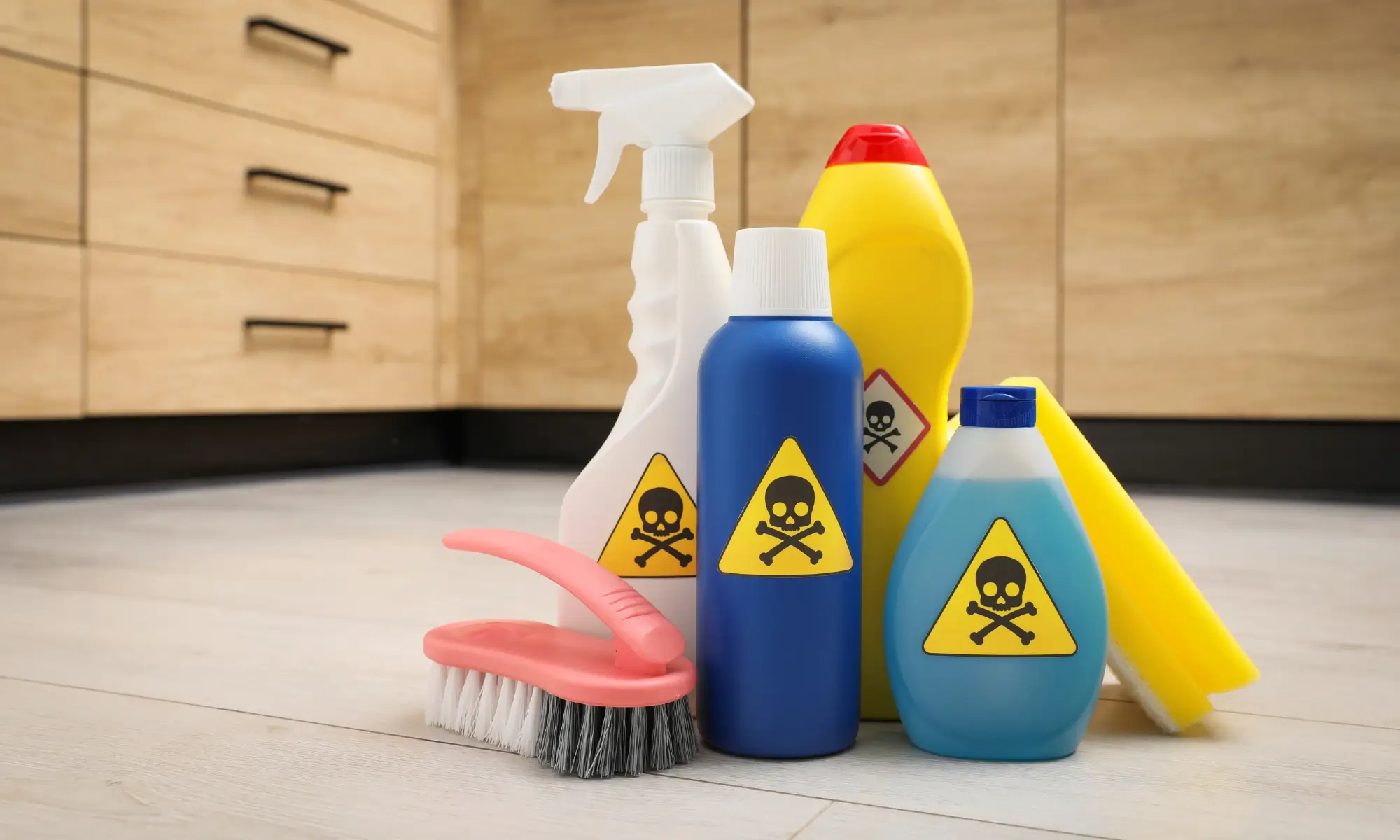Chemicals are the backbone of countless industries—from manufacturing and agriculture to healthcare and research. However, with their widespread use comes the inevitable risk of chemical hazards that can seriously affect human health and the environment. Whether you’re a safety officer, lab technician, factory worker, or employer, understanding chemical hazards isn’t just a compliance requirement—it’s a vital step in creating a safe and sustainable workplace.
This comprehensive guide explores the 10 most common types of chemical hazards, such as toxic, corrosive, flammable, and carcinogenic. For each type, we break down real-world examples, associated risks, and practical control measures that help you prevent exposure, minimize danger, and ensure compliance with workplace safety standards.

Types Of Chemicals and How to Manage Them
A chemical hazard is any substance that has the potential to cause harm to people or the environment. This includes chemicals known to be dangerous and those that may not have been thoroughly tested for workplace safety.
There are a variety of ways that chemicals can be hazardous. They may be:
1. Toxic Chemicals
Toxic chemicals can harm or even kill living organisms when they are ingested, inhaled, or come into contact with the skin. Toxicity is the ability of a chemical to produce adverse health effects in a living organism. There are many different types of toxic chemicals, and they can be found in various products and materials. Some harmful chemicals are naturally occurring, while others are man-made.
Toxic chemicals can enter the body through the skin, lungs, or gastrointestinal tract. They can also be inhaled, ingested, or absorbed through the skin. Once in the body, toxic chemicals can cause various health problems, including cancer, reproductive and developmental problems, neurological disorders, and other illnesses.
There are several ways to reduce your exposure to toxic chemicals. You can choose products that do not contain harmful chemicals or use safe alternative products. You can also reduce your exposure when using products that contain toxic chemicals.
Toxic chemicals are found in many everyday products, including:
- Cleaning products
- Pesticides
- Building materials
- Furniture
- Car interiors
- Clothing
- Toys
- Electronics
Some of the most common toxic chemicals include:
- Asbestos
- Benzene
- Chlorinated solvents
- Dioxins and furans
- Formaldehyde
- Lead
- Mercury
- Pesticides
- Toluene
You can reduce your exposure to toxic chemicals by taking the following steps:
- Read labels and choose products that do not contain toxic chemicals.
- Use safe alternatives to products that contain toxic chemicals.
- Avoid using products that release toxic chemicals into the air, such as aerosols or aerosol-based cleaners.
- Ventilate areas where you are using products that release toxic chemicals into the air.
- Wash your hands after using products that contain toxic chemicals.
- Do not allow children to play with or use products that contain toxic chemicals.
- Dispose of products that contain toxic chemicals properly.
Keep track of the products containing toxic chemicals and your time using them. This information can help your healthcare provider if you experience health problems.
2. Corrosive Chemicals
Corrosives are substances that can cause damage to living tissue, metal, or other materials on contact. Some corrosives are strong acids or bases, while others are irritants that damage tissue without being chemically reactive. Regardless of their chemical makeup, all corrosives can seriously threaten worker health and safety.
There are four main types of corrosive chemicals:
- Acids,
- Bases,
- Oxidizing agents, and
- Reducing agents.
Acids release hydrogen ions (H+) when dissolved in water. Common examples of acids include hydrochloric acid (HCl), sulfuric acid (H2SO4), and nitric acid (HNO3). Bases release hydroxide ions (OH-) when dissolved in water. Examples of bases include sodium hydroxide (NaOH) and potassium hydroxide (KOH).
Oxidizing agents cause other substances to oxidize or lose electrons. Common examples of oxidizing agents include chlorine (Cl2), oxygen (O2), and nitric acid (HNO3). Reducing agents cause other substances to reduce or gain electrons. Common examples of reducing agents include hydrogen (H2) and carbon monoxide (CO).
Corrosives can cause various health effects, depending on the type of chemical involved and the extent of exposure. Acids can cause burns to the skin and eyes, while bases can cause chemical burns and irritation. Oxidizing agents can cause respiratory irritation and burning, while reducing agents can cause asphyxiation.
Corrosive Chemical Examples
- Sulfuric acid
- Hydrochloric acid
- Nitric acid
- Sodium hydroxide
- Potassium hydroxide
- Chlorine
- Oxygen
- Hydrogen
- Carbon monoxide
To protect workers from the dangers of corrosive chemicals, it is essential to have proper control measures in place. Some of the most effective control measures include:
- Providing adequate ventilation
- Using personal protective equipment (PPE) such as gloves, goggles, and respirators
- Posting warning signs and labels in areas where corrosives are present
- Training workers on the proper handling and storage of corrosive chemicals
- Conducting regular air quality testing
Employers can help ensure the safety of their workers from the dangers of corrosive chemicals by taking these precautions.

3. Oxidizers Chemicals
Oxidizers are substances that can cause or contribute to the combustion of other materials. Many common chemicals, such as oxygen, chlorine, and nitric acid, are oxidizers. While oxidizers may not be combustible, they can support the combustion of other materials.
There are several ways to control the hazards posed by oxidizers. One is to substitute a less reactive substance for the more dangerous one. Another is engineering controls to limit exposure, such as ventilation systems that remove oxidizing gases from the air. Administrative controls, such as work practices and procedures, can also reduce exposure to oxidizing materials. Personal protective equipment (PPE), such as respirators and protective clothing, should be used when exposure to oxidizers cannot be controlled by other means.
Oxidizers Chemicals Examples
- Oxygen
- Chlorine
- Nitric acid
Knowing their hazards and available controls is essential to minimise exposure if you work with or around oxidizing materials. Understanding and following these safety measures can help prevent accidents and injuries associated with these dangerous chemicals.
4. Water Reactive Substances
Water-reactive substances are materials that react violently with water. These reactions can generate heat, steam, and explosive gases. Common examples of water-reactive substances include sodium metal, potassium metal, and magnesium metal.
Taking precautions to prevent accidents and injuries is essential when working with water-reactive substances. Some basic safety measures include:
- Using appropriate personal protective equipment (PPE) such as gloves, goggles, and face shields
- Storing water-reactive substances in closed containers
- Avoiding contact with water
- Working in a well-ventilated area
- Training workers on the proper handling of these materials
By following these safety measures, employers can help ensure their workers are safe when working with water-reactive substances.
5. Pyrophoric Chemicals
Pyrophoric chemicals spontaneously ignite in air at or below 55 °C (130 °F). These substances are highly reactive and can pose a serious fire hazard.
Several measures can be taken to control the risk posed by pyrophoric chemicals:
- Store these materials in well-ventilated, fire-resistant cabinets or rooms.
- Keep them away from ignition sources, such as open flames, sparks, and heat.
- Do not handle them while smoking or using any other type of open flame.
- Use appropriate personal protective equipment when working with these substances.
- Train personnel in the proper handling and storage of pyrophoric chemicals.
- Keep a fire extinguisher readily available in the event of a fire.
Pyrophoric Chemicals Examples
- Sodium
- Potassium
- Magnesium
- Titanium
- Zirconium
When working with pyrophoric chemicals, it is important to always exercise caution and follow all safety protocols. These materials can pose a serious hazard if not handled properly.
6. Irritant Chemicals
Irritant chemicals are substances that cause inflammation of the skin, eyes, or respiratory tract. These materials can be either acidic or basic (alkaline). Common examples of irritants include chlorine, ammonia, and sulfuric acid.
Exposure to irritants can cause various symptoms, including skin and eye irritation, coughing, and difficulty breathing. In severe cases, irritant exposure can lead to chemical burns, respiratory distress, and even death.
There are several ways to control the hazards posed by irritant chemicals:
- Use appropriate personal protective equipment (PPE) such as gloves, goggles, and respirators
- Avoid skin and eye contact with the substance
- Work in a well-ventilated area
- Keep the substance away from food and drink.
- Follow all safety protocols when handling, using, and storing these materials.
Irritant Chemicals Examples
- Chlorine
- Ammonia
- Sulfuric acid
- Hydrochloric acid
- Nitric acid
If you work with irritant chemicals, you must be aware of their hazards and take steps to protect yourself. Proper safety procedures can help prevent accidents and injuries associated with these dangerous materials.
7. Flammable Chemicals
Flammable chemicals are substances that catch fire and burn easily. These materials can be either liquids, solids, or gases. Common examples of flammable chemicals include gasoline, ethanol, and acetone.
Flammable Chemicals Examples
- Gasoline
- Ethanol
- Acetone
- Toluene
- Xylene
- Methanol
Flammable materials pose a serious fire hazard and should be handled with caution. Some basic safety measures include:
- Storing flammable liquids in closed containers
- Keeping flammable materials away from heat sources
- Using appropriate personal protective equipment (PPE) when handling these substances
- Working in a well-ventilated area
- Training workers on the proper handling and storage of flammable chemicals
Employers can help ensure their workers’ safety when working with these dangerous materials by following these safety measures.
8. Harmful Chemicals
Harmful chemicals, which can be liquids, solids, or gases, can cause death, illness, or injury if inhaled, ingested, or absorbed through the skin. Common examples of harmful chemicals include carbon monoxide, asbestos, and lead.
Exposure to harmful chemicals can cause various symptoms, depending on the substance and the amount of exposure. Some common symptoms include headaches, dizziness, nausea, and difficulty breathing. In severe cases, exposure to harmful chemicals can lead to death.
There are several ways to control the hazards posed by harmful chemicals:
- Use appropriate personal protective equipment (PPE) such as gloves, goggles, and respirators
- Avoid skin and eye contact with the substance
- Work in a well-ventilated area
- Keep the substance away from food and drink
- Follow all safety protocols when handling, using, and storing these materials.
If you work with harmful chemicals, you must be aware of their hazards and take steps to protect yourself. Proper safety procedures can help prevent accidents and injuries associated with these dangerous materials.

8. Asphyxiants Chemicals
Asphyxiants are chemicals that can cause asphyxiation, or suffocation. They work by displacing oxygen in the air, which can be found in various settings and products. Some common examples of asphyxiants include:
- Anesthetics: Ether, chloroform
- Lacquer thinners: Toluene, xylene
- Paint strippers: Methylene chloride
- Refrigerants: Fluorinated hydrocarbons
- Solvents: Carbon tetrachloride, trichloroethylene
If you are working with any of these chemicals, it is important to be aware of the risks and take precautions to avoid asphyxiation. Symptoms of asphyxiation include lightheadedness, dizziness, nausea, and loss of consciousness. If you or someone you are with experiences these symptoms, move to fresh air immediately and call 911.
10. Carcinogens Chemicals
Carcinogens are chemicals that can cause cancer. They can be liquids, solids, or gases. Common examples of carcinogens include asbestos, arsenic, and benzene.
Carcinogens are classified into two categories: known and probable. Known carcinogens are chemicals that have been proven to cause cancer in humans. Probable carcinogens are chemicals shown to cause cancer in animals but have not yet been proven to cause cancer in humans.
Workers exposed to carcinogens are at an increased risk of developing cancer. To help protect workers from this hazard, employers should take steps to control exposure to these materials. Some basic safety measures include:
- Use appropriate personal protective equipment (PPE)
- Work in a well-ventilated area
- Avoid skin and eye contact with the substance
- Follow all safety protocols when handling, using, and storing these materials.
By following these safety measures, employers can help reduce the risk of cancer in workers exposed to carcinogens.
10. Mutagens Chemicals
Mutagens are chemicals that can cause genetic mutations. These materials can be either liquids, solids, or gases. Common examples of mutagens include:
- Chemicals: ethidium bromide, bleomycin
- Radiation: ultraviolet light, x-rays
Mutagens can cause various health effects, including birth defects, cancer, and infertility. Exposure to mutagens can occur in various settings, including workplaces, medical facilities, and homes.
There are several ways to protect yourself from exposure to mutagens:
- Use appropriate personal protective equipment (PPE)
- Work in a well-ventilated area
- Avoid skin and eye contact with the substance
- Follow all safety protocols when handling, using, and storing these materials.
If you are exposed to a mutagen, it is important to seek medical attention immediately. Mutagens can have serious health effects, so getting treated as soon as possible is important.
Conclusion
Chemical hazards come in many forms—some are explosive, some are silent threats like carcinogens or asphyxiants, while others react dangerously with water or air. Regardless of their nature, every chemical must be handled with respect, proper training, and strict safety controls. By recognizing the type of hazard a chemical presents and implementing the correct precautions—such as using PPE, proper storage, ventilation, and staff training—you can significantly reduce the risk of accidents, illnesses, and environmental harm.
Creating a safer workplace begins with awareness and action. Use this guide as a reference to evaluate your current chemical safety protocols and strengthen them where needed. When in doubt, consult safety data sheets (SDS), follow regulatory guidelines, and never compromise on protective measures. Your diligence can save lives and prevent long-term health consequences for workers and the community.

